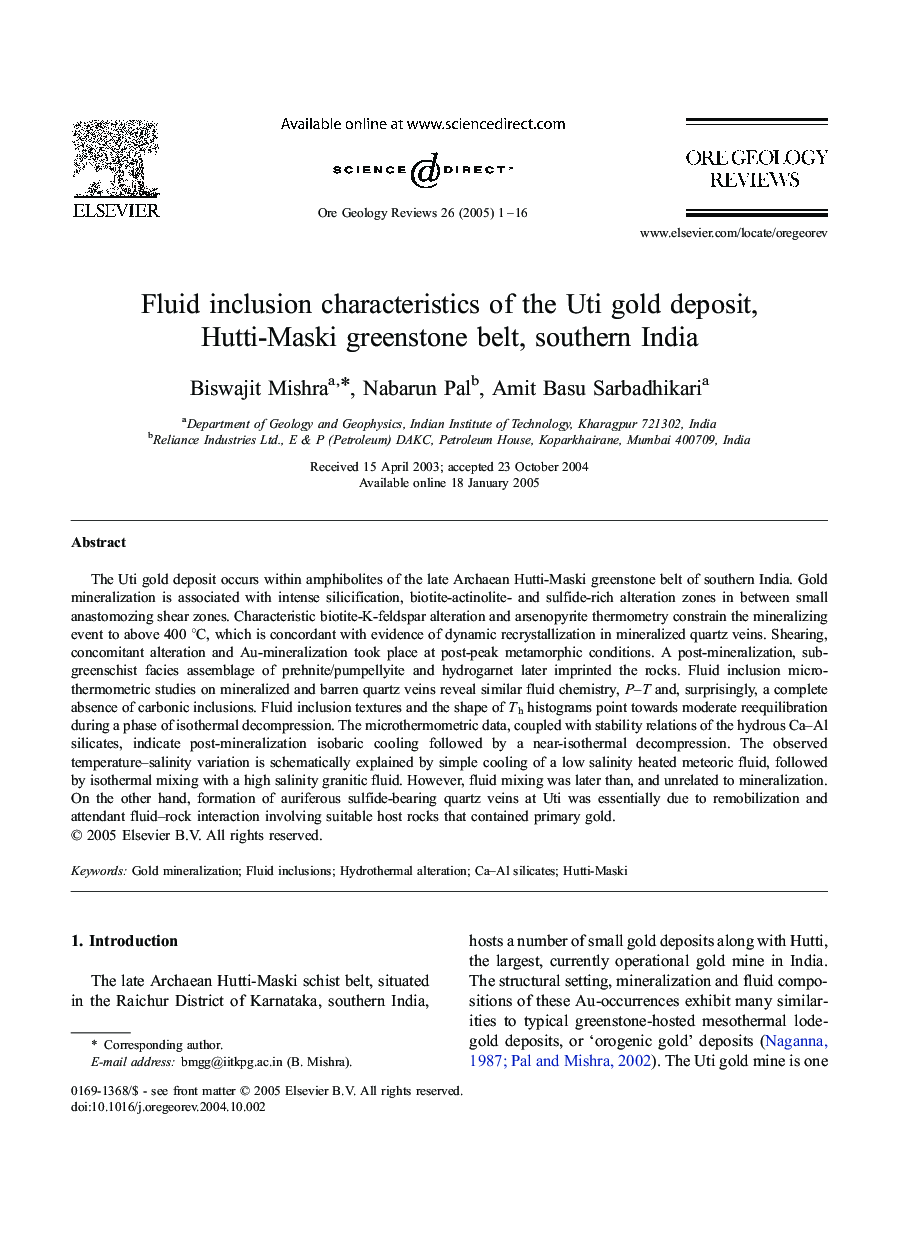| Article ID | Journal | Published Year | Pages | File Type |
|---|---|---|---|---|
| 9528807 | Ore Geology Reviews | 2005 | 16 Pages |
Abstract
The Uti gold deposit occurs within amphibolites of the late Archaean Hutti-Maski greenstone belt of southern India. Gold mineralization is associated with intense silicification, biotite-actinolite- and sulfide-rich alteration zones in between small anastomozing shear zones. Characteristic biotite-K-feldspar alteration and arsenopyrite thermometry constrain the mineralizing event to above 400 °C, which is concordant with evidence of dynamic recrystallization in mineralized quartz veins. Shearing, concomitant alteration and Au-mineralization took place at post-peak metamorphic conditions. A post-mineralization, sub-greenschist facies assemblage of prehnite/pumpellyite and hydrogarnet later imprinted the rocks. Fluid inclusion microthermometric studies on mineralized and barren quartz veins reveal similar fluid chemistry, P-T and, surprisingly, a complete absence of carbonic inclusions. Fluid inclusion textures and the shape of Th histograms point towards moderate reequilibration during a phase of isothermal decompression. The microthermometric data, coupled with stability relations of the hydrous Ca-Al silicates, indicate post-mineralization isobaric cooling followed by a near-isothermal decompression. The observed temperature-salinity variation is schematically explained by simple cooling of a low salinity heated meteoric fluid, followed by isothermal mixing with a high salinity granitic fluid. However, fluid mixing was later than, and unrelated to mineralization. On the other hand, formation of auriferous sulfide-bearing quartz veins at Uti was essentially due to remobilization and attendant fluid-rock interaction involving suitable host rocks that contained primary gold.
Related Topics
Physical Sciences and Engineering
Earth and Planetary Sciences
Economic Geology
Authors
Biswajit Mishra, Nabarun Pal, Amit Basu Sarbadhikari,
